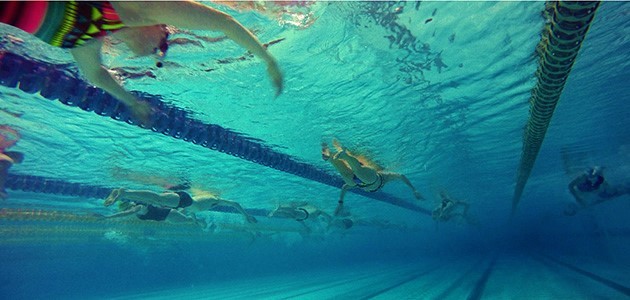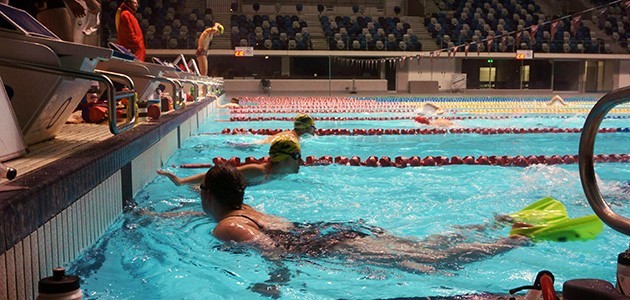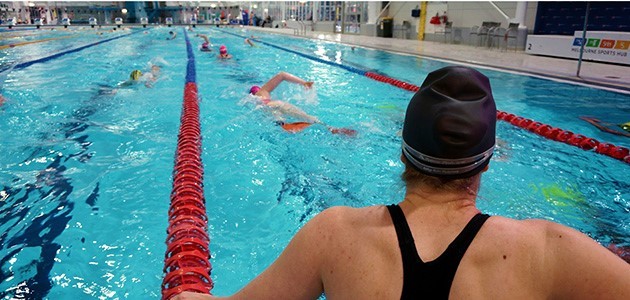
Swimming in a pool is a great way to work on your technique and fitness, however it can be frustrating if swimmers don’t observe correct ‘swimming etiquette’. From beginners to our advanced athletes, we want to ensure every swimmer has a great swim, maintains their confidence and correct technique. So do your best to observe and follow the pool rules.
Swimming Etiquette
Allow swimmers doing faster laps than you to swim ahead of you. By doing this, you won’t feel the pressure to attempt to speed up, thus affecting your technique.
When resting or waiting at the wall, you should stay as far to the left of the lane as possible to allow those swimming through to either tag or flip on the wall.
Slower swimmers starting a set should wait to push off the wall until faster swimmers have passed; for example, don’t push off right in front of a faster swimmer who’s coming into the wall. Allow them to pass first.
An overtaking swimmer should gently but distinctly touch the feet of the swimmer being overtaken; it may take two or three touches for them to notice properly.
A swimmer who feels a touch on the feet from an overtaking swimmer, should continue to the next wall, then stop in the left corner of the lane to let faster swimmer(s) past.
By allowing others to pass, it means you will have greater opportunity to work on your stroke and technique, rather than feeling pressured to go faster, thus sacrificing your overall confidence in the water.
Swimmers should always be aware of the gap behind them and try to anticipate when that swimmer (if he/she is faster) is likely to overtake him/her.
A lead swimmer who sees another swimmer coming up close behind as he/she turns at the wall, should consider stopping and moving over immediately at that wall in order to let the faster swimmer past. It will then put a stop to ‘blocking’ and creating a situation where toe-touching becomes necessary.
If more than one swimmer is bunched close behind, the swimmer being overtaken should allow the entire group of faster swimmers to pass before pushing off the wall again. For example, don’t push off right in front of someone else who’s also obviously faster.
In every swim session there will always be somebody in your lane who is faster than you. Consider this when the above situation occurs.
Swimmers being overtaken should not attempt to speed up (or slow down) once ‘tagged’, nor should they jump in and ‘tag back’ the new lead swimmer on the next lap.
Overtaking swimmers should not attempt to swim ‘wide’ past a slower swimmer—unless there are only a few swimmers in the lane. In most cases, swimming wide presents a hazard to other oncoming swimmer(s), forcing them to pull over or break stride and stroke to avoid a collision.
If you feel as though you finding yourself overtaking other swimmers in your lane frequently, consider mentioning this to the coach, but also refer to ‘Lap Cutting for Faster Swimmers’.
In the rare case that a passing swimmer does swim wide, he/she should be confident in his/her ability to sprint into the field of vision of the lead swimmer well before he/she gets to the wall.
Otherwise, this sets up for a collision at the wall as both swimmers attempt to turn on top of one another.
In the case of any ambiguity at the wall, the swimmer whose head is behind should give way to the swimmer whose head is in front.
In the case that a strong swimmer finds him or herself at the back of a line of several slower swimmers in circle format, it is acceptable (after looking carefully) to move to the other side of the lane mid-length (cutting the lap) and proceed in the opposite direction, somewhat ahead of the line he/she had been trailing.
It is advised to bring this to the attention of your lane coach on the pool deck if you do find yourself in this position. That coach will ensure that you will begin at the front of all sets where possible, so that you can continue to swim the full length of the training session.
Athletes are advised not to stop in any part of the lane, other than the wall. Not only can this create confusion for other athletes who are approaching the wall to tag or flip, but it can also create collisions. If you need to adjust your goggles, swim cap, ear or nose plugs – you are advised to wait until you reach the end of lane.


